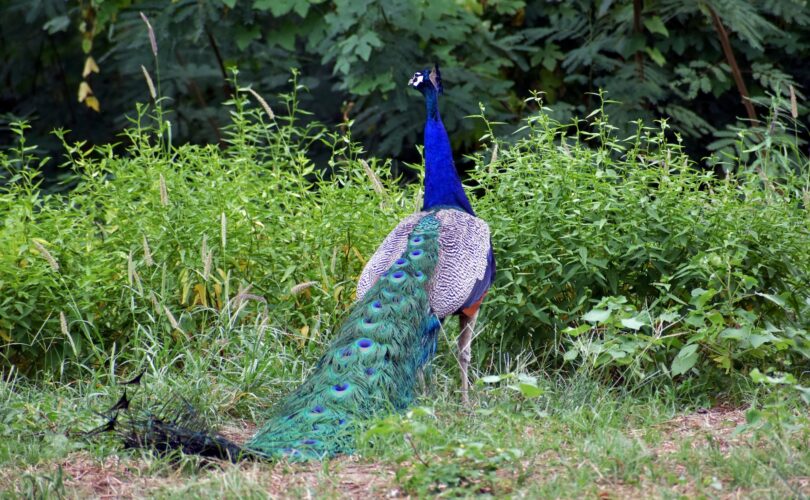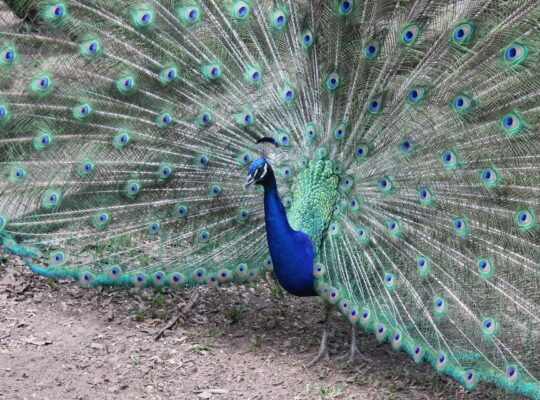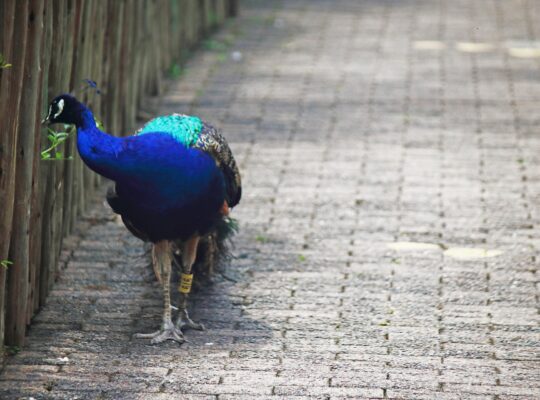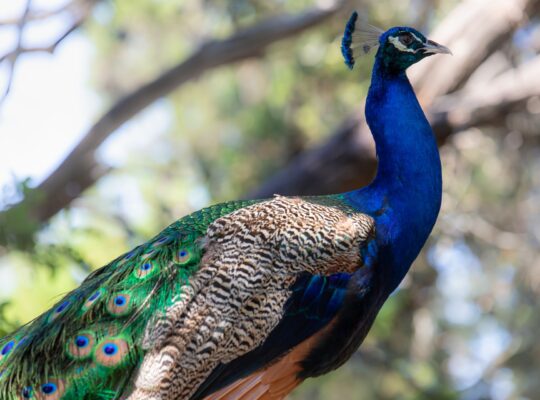Peacocks are stunning birds often maintained as decorative birds in zoos, parks, and private residences. They are, however, susceptible to various infections that might cause major health issues. This post will go through several common peacock illnesses and treatments. Here are some of the common diseases of peacocks
What Are The Common Diseases Of Peacocks?
1. Newcastle disease is a highly infectious viral virus that affects peacocks’ respiratory, digestive, and neurological systems. Breathing difficulties, coughing, diarrhea, and sadness are all symptoms. The illness may be lethal in extreme situations. While there is no particular therapy for Newcastle disease, supportive care, like fluids and medications to prevent subsequent infections, may enhance the bird’s chances of recovery. To prevent the sickness, vaccines are available.
2. Coccidiosis is a parasitic illness produced by a tiny parasite that infects peafowl intestines. Diarrhea, lack of appetite, and weight loss are some symptoms. It is often spread by contaminated food or drink. Anti-coccidial treatments such as sulfa drugs or amprolium are often used in treatment. In severe instances, supportive treatment, such as fluids and electrolytes, may be required.
3. Aspergillosis is a fungal illness that affects the peafowl’s respiratory system. Coughing, sneezing, trouble breathing, and fatigue are all symptoms. Inhaling spores from mouldy or wet settings is frequently the cause. Antifungal drugs such as itraconazole or fluconazole are often used in treatment. In extreme situations, oxygen or fluid treatment may be required.
4. Marek’s Disease: Marek’s disease is a viral virus that damages a peafowl’s neurological system. Paralysis, trouble walking, and weight loss are some of the symptoms. Contact with diseased birds or polluted habitats are mainly how it spreads. There is no particular therapy for Marek’s illness, although supportive care like fluids, electrolytes, and pain control may assist the bird’s quality of life. To prevent the sickness, vaccines are available.
5. Avian influenza is a highly infectious viral virus that affects peafowl’s respiratory and digestive systems. Fever, coughing, diarrhea, and tiredness are some of the symptoms. It is very infectious and may be lethal, particularly in young birds. Therapy usually consists of giving fluids and electrolytes to avoid dehydration. In certain circumstances, antiviral drugs may be recommended as well.
The key to keeping peafowl healthy is prevention. Maintaining a clean, dry environment with enough room to move about may prevent illness. An adequate diet and access to safe drinking water are also essential. Fresh birds should be quarantined before being introduced to an established flock to avoid illness transmission. Vaccinations for some of these illnesses may be available, and consultation with an avian veterinarian is essential for the health and well-being of the peafowl.
Furthermore, early detection and treatment of peacock disorders are crucial to their recovery and well-being. Proper care and preventive measures like vaccinations and quarantine may aid in the health of peafowl. If you feel your peacock is ill, get veterinarian assistance as soon as possible to improve your chances of a successful recovery.
Do Peacock Feathers Have Diseases?
Peacock feathers are not known to contain infections that may directly impact people. Feathers from any bird, however, may transmit hazardous germs, fungi, or parasites to people or other animals. Moreover, feathers may store allergens that cause respiratory issues in certain persons.
Bacteria detected on peacock feathers include Staphylococcus aureus, Escherichia coli, and Salmonella. Skin diseases, respiratory infections, and food poisoning may all be caused by these bacteria. Fungi like Aspergillus and Penicillium may be found in peacock feathers and cause respiratory issues in persons with allergies or asthma.
Peacock feathers may also host parasites such as mites, lice, and ticks. These parasites may irritate the skin and transmit infections like Lyme disease, Rocky Mountain spotted fever, and other tick-borne disorders.
It is advisable to carefully wash peacock feathers before using them for decorating or crafts to prevent the risk of illness or allergy exposure. It is also critical to use clean hands and avoid touching your face or lips while handling them. If you have allergies or respiratory issues, you should avoid using peacock feathers entirely.
Additionally, feathers might endanger the birds themselves. Feather mites and lice may infest birds, causing pain, itchiness, and feather loss. Feather plucking is a behavioral issue in which birds take off their feathers due to stress or boredom.
In conclusion, although peacock feathers are not known to contain illnesses that may directly impact people, they can store germs, fungi, parasites, and allergies that can endanger human health or create pain in the birds. For example, washing and handling them with clean hands may help limit the risk of illness or exposure. Also, frequent grooming and providing a stimulating environment for the birds may aid in the prevention of feather-related issues.







